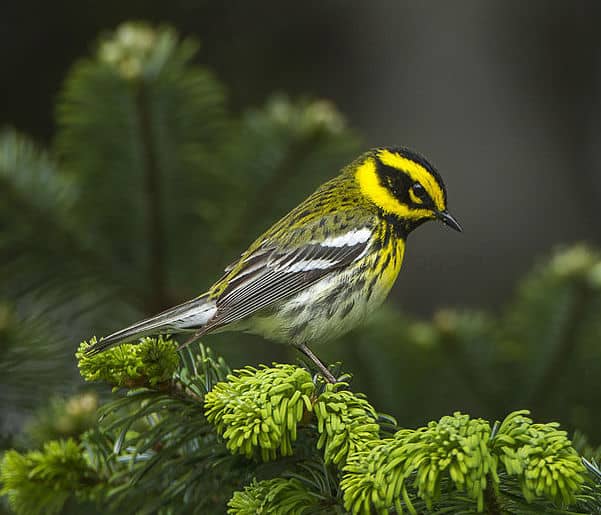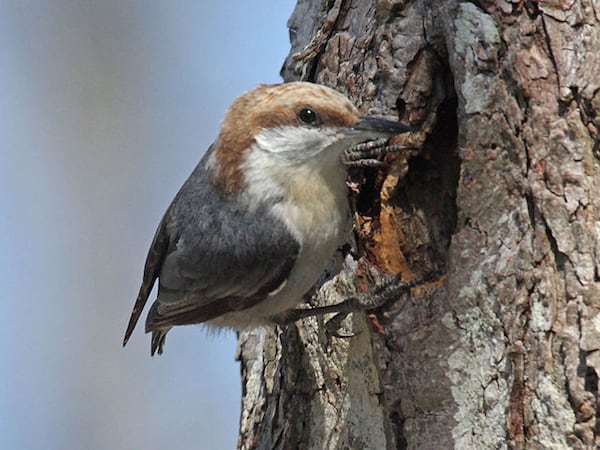The pileated Woodpecker is the largest living woodpecker in North America. Both male and female pileated woodpeckers sport a red crest; the female’s forehead is brownish and the male’s is scarlet. A dull, dark charcoal-gray overall, pileateds reveal a large amount of white in the underwing when they take flight. Seen crossing high over a road, their wingbeats are slow and steady, the wings seeming to close between each beat.
Listen for
Pileateds are very vocal; the series of notes in its long, loud call sounds like someone laughing. The call is a high, wild yik-yik-yik-yik-yik, suggesting a flicker, but not as monotonous. In flight, they may utter single or double notes of the same quality. Also, the pileated’s hollow, sonorous drum roll fades away as it finishes.
Find it
Such a large bird needs large diameter trees because it roosts and nests in cavities that it excavates with its chisel-like bill. Older-growth forests with standing dead trees, usually in bottomland or near watercourses, are preferred. In autumn, wandering pileateds may show up unexpectedly along roadsides and in yards, feasting on sumac, firethorn, dogwood, viburnum, or other fruits. Pileateds are resident throughout their range.
Feed it
Loud, chopping blows herald the presence of a feeding pileated woodpecker. They sometimes sound not so much like a woodpecker as a strong person wielding an axe. Palm-sized pieces of bark and punky (soft and rotted) wood fly as the bird strips bark or excavates to reach the ant galleries and beetle larvae it needs. It is a surprisingly agile fruit plucker, clinging like an overgrown chickadee as it eats small fruits. Pileateds also glean bark and branches for insect prey.
Nesting Behavior
Pileated pairs stay together year-round and presumably mate for life. Male pileated woodpeckers do most of the nest cavity excavation. The female lays four eggs, and both she and her mate incubate them; they hatch after about 16 days. Young remain in the cavity for up to 30 days, after which they have a long apprenticeship of learning to procure food with their parents.
WOW!
If you see a large rectangular hole chiseled in a large tree, it’s the work of the Pileated Woodpecker. They need to create large holes to get to ants and grubs in the rotting centers of old trees.




